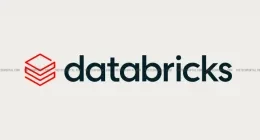‘Document management’ or ‘Document management system’ is a process of storing, managing and tracking electronic documents, such as emails, system generated reports or even scanned paper documents with the help of computer software. It has become useful to every sector whether it is a small business or corporate companies or any institutions.
Using the document management system is a great way to go green and as well as it would help you to save time and energy. If you search for a Document workflow software in any search engine, you will come with many options to choose from, but not every DMS is required for your organization. You need to choose wisely before purchasing.
Here in this article I will guide you on how to structure your document management system, but before that, I will help you in choosing a document management system.
There are two types of DMS:
-
-
- On-premise: All the documents will be stored in your server, and you will be entirely responsible for the security and maintenance of those files. A dedicated IT team is required in this case.
- Cloud-based: Internet is a must in this type of software, all the process of storing, retrieving is done online. The security and maintenance depend on the service provider.
-
You can choose from these type of document management software, but few things also needed to be kept in mind.
- Know your needs: Before purchasing a document management system, you need to know the purposes of having a DMS first, because document management software comes with various tools for various uses. If you are not able to determine your needs, you will eventually end up buying the wrong system.
- Simple Interface: You definitely don’t want to go for complicated user interface while purchasing a DMS. Get a DMS which is user-friendly and easily accessible with a clear visual design; this way your employees do not have to be looking for the user manual each time they are trying to retrieve any document.
- Flexibility: The DMS should be flexible with the operating system in your office’s computers and as well as should co-operate with the other software or programs on those computers.
- Workflow Management: Choose a DMS having project management features to keep your project running and this way your workflow will not hamper.
- Capturing documents: The document management software needs to be intelligent enough to capture documents from various sources. It can be emails, or any system generated reports, even any application generated reports, no matter whatever the document is, the DMS have to capture those and also retrieve them whenever needed.
- Security: No one should compromise in case of security. It doesn’t matter if the documents are vital or not; the safety of the documents is a priority. You need to be aware of the security updates and install those updates properly.
- Vendor: All these requirements can be fulfilled by the vendors only. You don’t want to regret after buying a DMS. Choose an experienced vendor, apart from researching about the DMS; you need to read the reviews about the vendors too.
After purchasing the DMS, it’s time for creating a structure and implementing that.
You need to have a document management plan, and you need to execute it accordingly.
To have a plan, you need to know a few details.
- First, you need to make sure which documents are essential and which are not. There can be plenty of documents stored in your cabinet or drawer having no use. Here is how you can organize file cabinet. It would be best if you sort them. Then comes the digital documents like emails, reports, invoices, bill dues. The DMS needs your permission before accessing your data, so it would be up to you which documents you want to be captured by the DMS.
- Storing the documents in the DMS is a significant thing. After sorting the paper documents, one can scan those useful documents in the document management system. Using a high-speed scanner is advisable. Here is a full list of best scanners 2019 in PCmag.
- If it’s a small business with one or two users then implementing the same won’t create any problem, but if many people collaborating altogether to create or update a document, you need to spend some time structuring the DMS to ensure the work efficiency.
- To find a particular document easily, accurately indexing those documents is required. Some DMS have a keyword search feature, to make the most of it, indexing the contents with the right keywords will be beneficial. Other keyword research tools I use.
- Storing those documents in separated folders is also necessary, and you need to make your employees aware of those folders. For example, store emails in a folder named emails or images in a folder named digital pictures in a particular drive. This way it would be easy to find the documents.
- You need to know about your employees which documents they require to complete their work. The access should be given to them according to that. Sharing a folder or resource can be restricted, or any file in a particular folder can be password protected. The implementation needs to be done properly.
- As mentioned earlier, the security of those files will be a bigger priority. Employee theft is a significant threat, as you check with the security feature of DMS; you must check the background of your employees too.
- Always be updated about the latest software version, install them as quickly as you can, because every newest version comes with many new features which can be useful to your business.
Purchasing a document management system, and installing it in your organization is a task of one day, but structuring it and using it properly would take time. This type of software is easy to use, but I would advise you to organize a training session with your employees for a smooth workflow. The advantages of becoming a paperless office are huge, as well as finding the right document in less time will give you comfort and save you from some headache.




